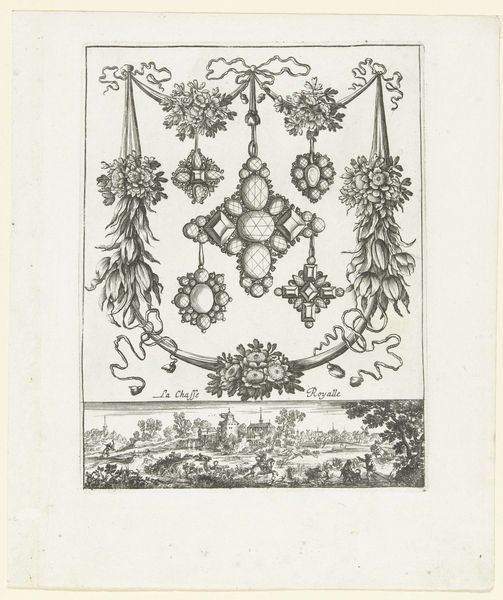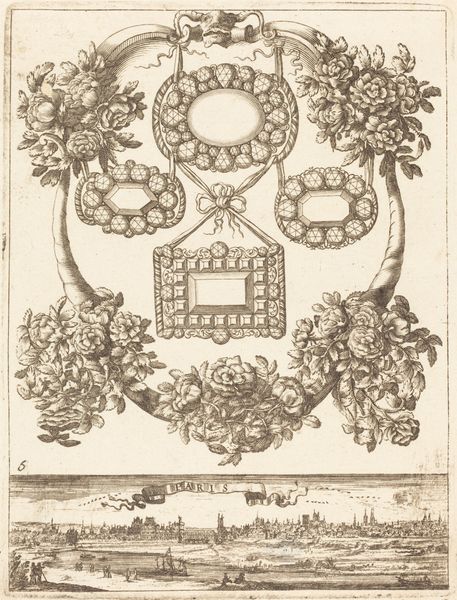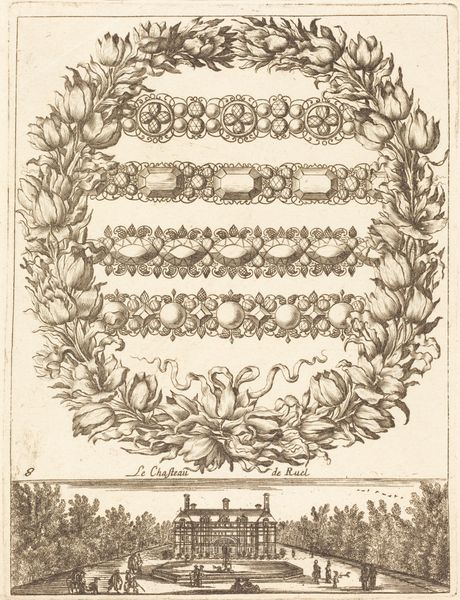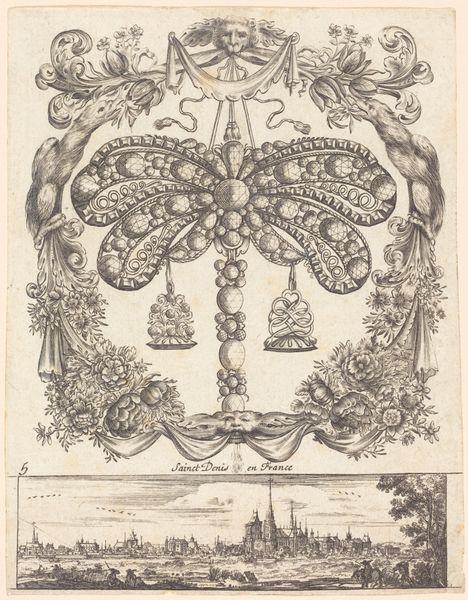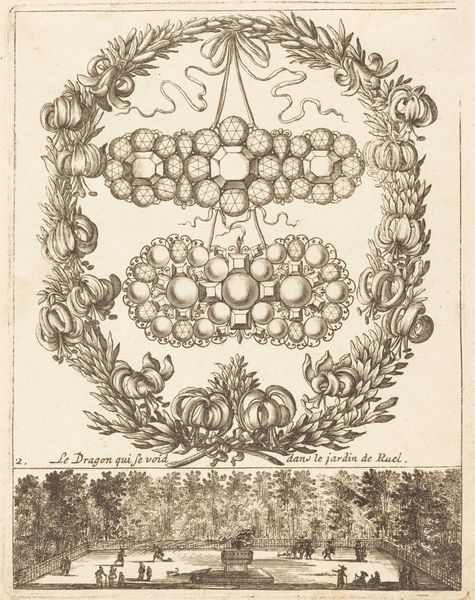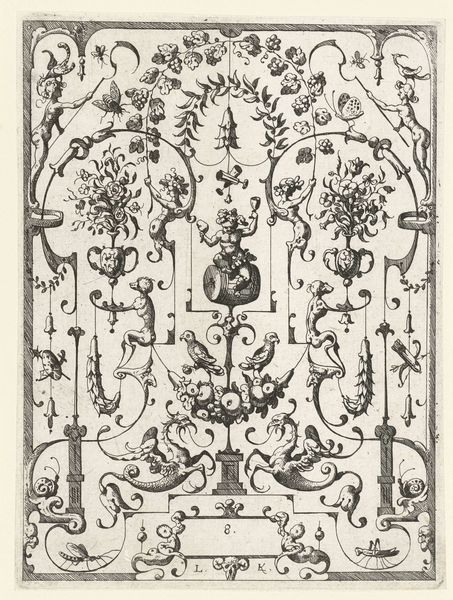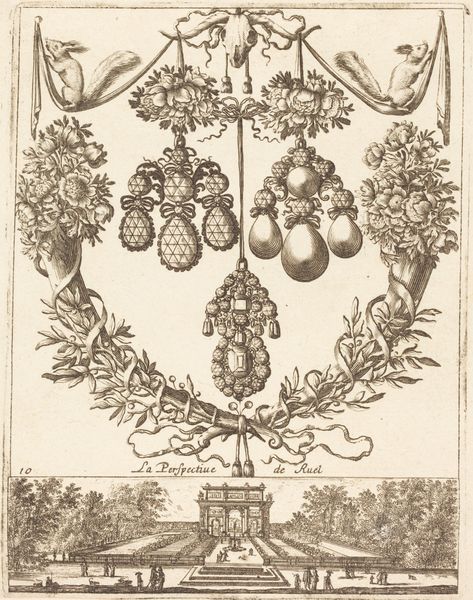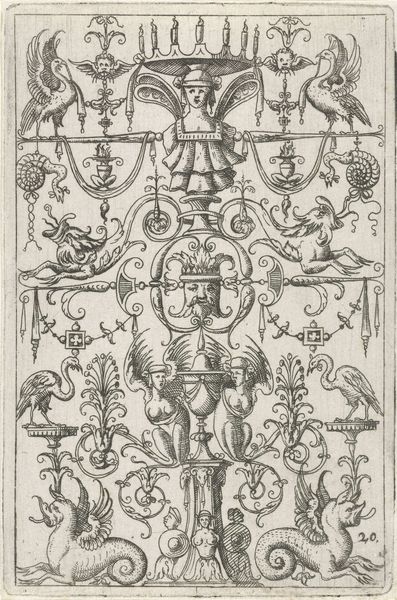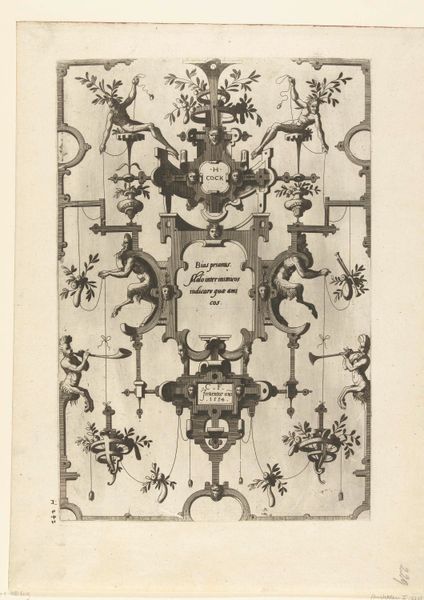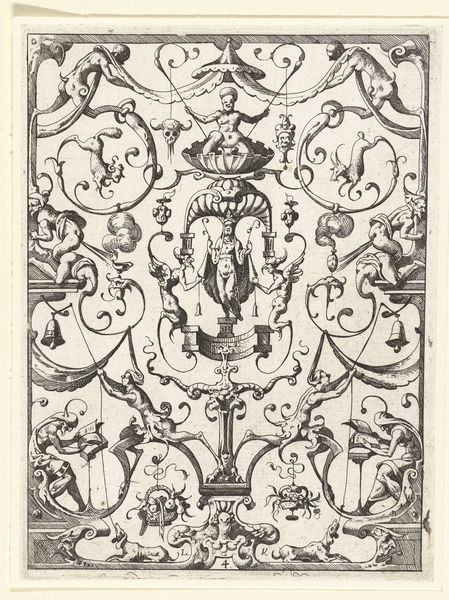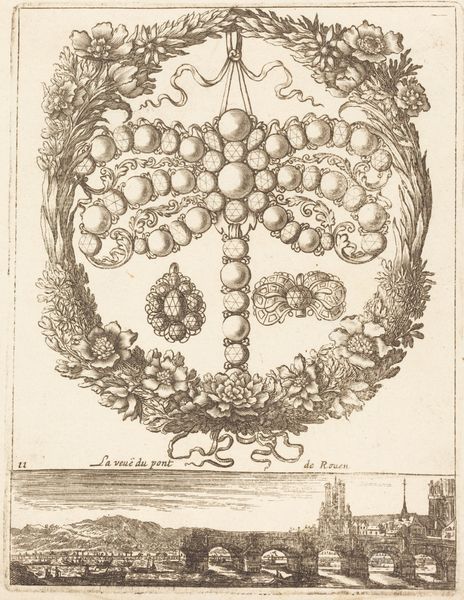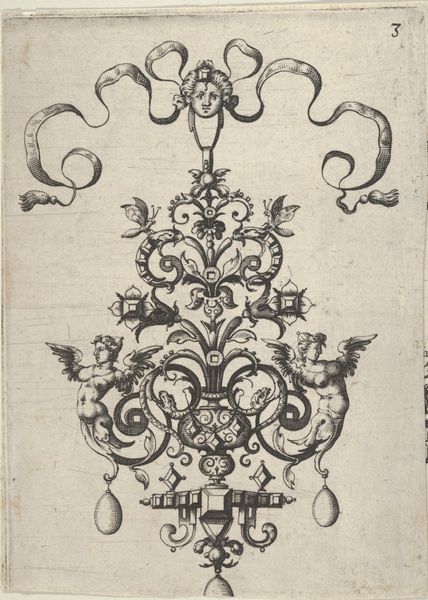
print, engraving
#
baroque
# print
#
landscape
#
line
#
engraving
Copyright: National Gallery of Art: CC0 1.0
Curator: This is François Le Febvre’s "La Chasse Royalle," an engraving dating back to about 1665. It presents us with some decorative arrangements over a scene of, presumably, a royal hunt. What is your immediate response? Editor: Well, it feels opulent but also constrained, somehow. It's like someone desperately wants to show off wealth, but it comes off a bit… stiff? All those symmetrical jewels hanging there, above what’s meant to be a free-flowing, outdoor activity. The detail in the engraving is quite something, though. Curator: Precisely. Engraving allowed for a wide dissemination of designs, fueling trends across Europe. Le Febvre was clearly aiming for the luxury market here, demonstrating how even a traditionally elite pursuit like a royal hunt becomes commodifiable, a status symbol to be consumed. Editor: You’re so right. The jewels feel separate, don't they? They’re objects *about* the hunt, not integral to it. They remind me a bit of those heavily ornamented hunting trophies, removed from their natural context and made into pure display. It makes one wonder about the role of artists like Le Febvre in perpetuating, perhaps even glorifying, this spectacle of royal excess. Curator: Consider too, the labor involved in creating an engraving of this complexity. Every line, every flourish was deliberate and the process was slow. It points to a network of skilled artisans producing images that, ironically, depicted a world of leisure enjoyed by a select few. Editor: I hadn't thought about it like that before, but it absolutely frames the social dynamics at play here. So much effort dedicated to capturing an event itself designed for leisurely, exclusive indulgence. It also raises the question of skill and the artisan - so much craft! It almost surpasses what would generally be described as "art". I suppose this piece defies boundaries and preconceived notions about labor and art. Curator: Indeed. By looking at it through the lens of its material production and historical context, "La Chasse Royalle" ceases to be just a pretty picture. Editor: Well, thanks to you, I think I will now perceive the piece through many new ones, especially the underlying commentary on the material consumption of "the hunt" versus, as you pointed out, "the hunt itself". It's so very revealing.
Comments
No comments
Be the first to comment and join the conversation on the ultimate creative platform.
